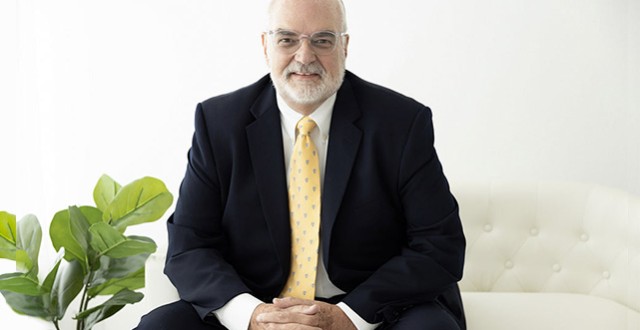
- Mediation
- Arbitration
- Court Neutrals
- Online Dispute Resolution
- Technology
- Court Decisions
- More
- Legislation
- Healthcare
- Guest Posts
- John DeGroote
- John C. Fleming
- Rick Freeman
- Professor Peter Friedman
- Honorable W. Royal Furgeson, Jr.
- James M. Gaitis
- Laura A. Kaster
- Professor John Lande
- Philip J. Loree, Jr.
- Michael McIlwrath
- F. Peter Phillips
- Professor Alan Scott Rau
- Professor Thomas J. Stipanowich
- Professor S.I. Strong
- Richard Webb
- Glen M. Wilkerson
- International arbitration
- Regulation
- Sports and Entertainment
- We’re Back!!!!Well, it’s been a while since we published and that is about to change. Since I spent much of last year becoming
 JAMS Welcomes Karl Bayer to its Panel of NeutralsJAMS, the world’s largest private alternative dispute resolution (ADR) provider, is pleased to announce that Karl Bayer
JAMS Welcomes Karl Bayer to its Panel of NeutralsJAMS, the world’s largest private alternative dispute resolution (ADR) provider, is pleased to announce that Karl Bayer Class Action Waivers in Arbitration Agreements: The Twenty-First Century Arbitration Battleground and Implications for the EU CountriesLinda S. Mullenix, Morris & Rita Atlas Chair in Advocacy at the University of Texas School of Law, has written “Class Ac
Class Action Waivers in Arbitration Agreements: The Twenty-First Century Arbitration Battleground and Implications for the EU CountriesLinda S. Mullenix, Morris & Rita Atlas Chair in Advocacy at the University of Texas School of Law, has written “Class Ac Picking the Proper Technological Tool for Problem-Solving in ArbitrationProfessor Amy J. Schmitz, John Deaver Drinko-Baker & Hostetler Chair in Law and Co-Director of the Translational Data An
Picking the Proper Technological Tool for Problem-Solving in ArbitrationProfessor Amy J. Schmitz, John Deaver Drinko-Baker & Hostetler Chair in Law and Co-Director of the Translational Data An
Recent Posts
International: More on Hong Kong’s New Mediation Procedure
To follow up on our earlier post, here are more details about Hong Kong’s mediation initiative: Mediation in Hong Kong December 10, 2009 By Alfred Ip, Partner at OLN and CEDR Accredited Mediator From 1st January 2010, the court will require parties to civil proceedings to consider using mediation as an alternate means to settle their dispute. The court will require the parties to justify their decision in case they refuse to attempt mediation, failing which adverse costs order may be made against that party, irrespective of the outcome of the litigation. The court also put the burden on the parties’ legal representatives to advise their clients properly on mediation, as early as possible. In fact, good lawyers in dispute resolution should be in a position to advise their clients of various ways to resolve a dispute. Civil proceedings should not be the only way to resolve disputes among parties in the modern era. Mediation provides a platform for parties in dispute to discuss their issues in dispute in the presence of a trained and impartial mediator. The role of the mediator is to direct the parties to look at the future, and assist the parties in identifying their needs, in order to explore the alternatives available to the parties in resolving the disputes. Mediation trumps over court proceedings in many ways: 1. Mediation is less expensive compared with litigation, because of the time involved. 2. The process of mediation is much quicker compared with court proceedings. Mediation can take place within weeks, while court proceedings often go on for years. 3. Some of the disputes and grievances arise out of the parties’ misunderstandings. Through dialogue, parties can be in a better position to understand their respective points of view, and the parties’ ongoing relationship can be saved through clearing such misunderstandings, which is less likely to be achieved through court proceedings. 4. Any resolution made at the end of the mediation would be made by the parties themselves, instead of a third party’s decision imposing on the same. 5. As the outcome is controlled by the parties, parties can tailor their agreement according to their wishes or their situation, and achieve an outcome which may not be achievable through court proceedings. 6. Parties are less likely to be aggrieved by the outcome of the mediation, which is agreed by the parties themselves. The problem of prolonged appeal process would not arise. 7. Parties who mediate their differences are able to attend to the fine details of implementation. Negotiated or mediated agreements can include specially tailored procedures for how the decisions will be carried out. This fact often enhances the likelihood that parties will actually comply with the terms of the settlement. 8. The mediation process, and the end result of the same, is private and confidential, whereas a judgment in court proceedings is often a public record. What the parties discussed throughout the mediation process cannot be used in any court proceedings, thus the parties are at liberty to voice their standpoint freely. The Law Society of Hong Kong and the Hong Kong International Arbitration Centre both maintain a panel of mediators for the parties to choose, while the Centre for Dispute Resolution is the most influential non-profit mediation body. Technorati Tags: ADR, law, arbitration
Continue reading...Employment Arbitration: Issues Implementing the ‘Franken Amendment’
[Ed. note: hat tip to our blog contributor Don Philbin.] On January 20, 2010, the Council of Defense and Space Industry Associations (CODSIA) sent a letter to the Director of Defense Procurement and Acquisition Policy raising questions and issues in implementing Section 8116 of the Fiscal Year 2010 Defense Appropriations Act (aka the “Franken Amendment”). Section 8116 prohibits the use of funds for certain contracts unless the contractor agrees not to enter or enforce binding arbitration contracts with their employees. CODSIA seeks to clarify Section 8116’s legislative intent in order to implement the amendment consistently. Find the letter describing the issues here. Related Posts: U.S. Arbitration and Mediation Legislative Update (Jan. 25, 2010) Guest-Post Part II | Employment Arbitration: Short-Term Value but Long-Term Harm (Jan. 7, 2010) Guest-Post Part I | Employment Arbitration: Short-Term Value but Long-Term Harm (Jan. 6, 2010) 2009 Developments: Consumer and Employment Arbitration (Dec. 23, 2009) Defense Contractor Mandatory Arbitration Passes Senate (Oct. 13, 2009) Jones v. Halliburton: Fifth Circuit Rules on Arbitration of Tort Claims by an Employee (Sept. 18, 2009) Technorati Tags: law, ADR, arbitration
Continue reading...Mediate.com Receives Prestigious American Bar Association (ABA) Award
Please join us in congratulating Mediate.com for their recent ABA Award. As readers of this blog may know, Disputing is a Mediate.com Featured Blog. Mediate.com Receives Prestigious American Bar Association (ABA) Award Eugene, Oregon – Mediate.com, the leading mediation web site in the world, has received the 2010 American Bar Association (ABA) Lawyer as Problem Solver Award. The award is for the use of “legal skills in creative, innovative and often nontraditional ways.” The award presentation will be on April 9, 2010 in San Francisco. In awarding the Problem Solver Award to Mediate.com, the American Bar Association provides the following statement: “Mediate.com has been at the forefront of making the power of the Internet accessible to lawyers, mediators and dispute resolution practitioners. Mediate.com has been developing digital products and resources that have advanced the presence and depth of the field of dispute resolution in immeasurable ways and fundamentally altered the practice of mediation by making online strategies practical and available. “Mediate.com offers the field one of the most used information resources, replete with blogs, cutting edge articles, news of mediation and negotiation practice, as well as a place for interactive dialogue. The website is a practical tool for practitioners and helps them become more effective problem solvers. “Mediate.com applies the technology of the internet directly to lawyers and dispute resolution practitioners. The founders of Mediate.com had the foresight to see the importance and applications of the Internet and bring them to bear on a developing field of practice. This groundbreaking website has given tools and resources to the public and to ADR professionals to do their own problem solving in virtually every field of law.” James Melamed, CEO of Mediate.com, responded to news of the award saying that, “If ever there was a team effort, this is it. Mediate.com is the result of more 1,000 authors contributing their best work since 1996. As a result, we are able to bring the best of mediation to the broader world.” Mediate.com has been the #1 mediation destination site for 15 years and continues to provide world class content to consumers and professionals. In commenting on the Mediate.com award, Peter Adler, President of The Keystone Center in Colorado, said, “Mediate.com provides an enormous service to the vast community of people who share a passion for conflict resolution, who want to make the world a better place and who are doing this every single day.” Jeffrey Krivis, a leading California attorney and civil mediator, adds, “Based upon 15 years of passionate work, Mediate.com has become to mediators what Google has become to the Internet.” Mediate.com was founded in 1996 and has developed the most comprehensive mediator directory in the world with over 5,000 listed mediators. Through its 15 years of development, Mediate.com has elevated and expanded the mediation industry and helped to bring mediation to every computer on earth. More information about Mediate.com services can be found here.
Continue reading...Harvard Medical, Dental, & Public Health Newsletter: Conflict Resolution in Health Care
by Holly Hayes I recently read a healthcare conflict resolution article in FOCUS, the newsletter of the Harvard Medical, Dental, & Public Health Schools. The article begins with the statement, “Everyone in health care, it seems, has a war story about conflict at work.” In an annual one-week intensive immersion course, Leonard Marcus, who directs the program for Health Care Negotiation and Conflict Resolution at Harvard, and his team teach conflict resolution skills to health care leaders from different organizations. The course adapts to health care the basic principles of conflict resolution described in “Getting to Yes” by Roger Fisher, William Ury, and Bruce Patton of the Harvard Negotiation Project. Marcus discusses why conflict in the health care setting is different from conflict in other industries and reviews the ‘Four-step Approach to Problem-solving’ used in the Harvard course: “In health care, we are passionate about what we do, and that’s a plus,” Marcus said. “When passions collide, that same drive can be a source of conflict. The stakes are high–life and death, large amounts of money, big institutions, reputations. Therefore, people fight hard which, ironically, becomes an obstacle in and of itself.” A Four-step Approach to Problem-solving Four negotiation steps developed by the Program for Health Care Negotiation and Conflict Resolution guide minor and major negotiations in health care. The structured multidimensional problem-solving process is called “Walk in the Woods,” after a famous story in which international negotiators at loggerheads over a nuclear arms treaty went for a walk in the woods near Geneva and discovered common interests that led to new solutions. Step one: self interests. Each participant articulates his or her view of key problems, issues, and options. They are encouraged to actively listen, question, and interact with one another. Step two: enlarged interests. The participants reframe their understanding of current problems and possible options with a wider perspective, based on the integrative listening and confidence-building that occurred in step one. Step three: enlightened interests. The group is ready to engage in innovative thinking and problem-solving, generating ideas and perspectives that had not previously been considered. Step four: aligned interests. Participants build common ground perspectives, priorities, action items, agreement, or plans for moving forward. Depending on the scope of the intended objectives, at this point they recognize the tangible contributions and opportunities accomplished through the meeting. Health care professionals at all levels who find themselves in a situation of work conflict can benefit from the “discovery of common interests” — after all, they share the overarching common interest of working together to provide patient’s with high quality care. The Harvard Four-step process can lead parties toward those “aligned interests” and enhanced teamwork. Technorati Tags: Healthcare, ADR, law, mediation Holly Hayes is a mediator at Karl Bayer, Dispute Resolution Expert where she focuses on mediation of health care disputes. Holly holds a B.A. from Southern Methodist University and a Masters in Health Administration from Duke University. She can be reached at: holly@karlbayer.com.
Continue reading...Arbitration
Mediation
Healthcare Disputes
Legal Research
About Disputing
Disputing is published by Karl Bayer, a dispute resolution expert based in Austin, Texas. Articles published on Disputing aim to provide original insight and commentary around issues related to arbitration, mediation and the alternative dispute resolution industry.
To learn more about Karl and his team, or to schedule a mediation or arbitration with Karl’s live scheduling calendar, visit www.karlbayer.com.






